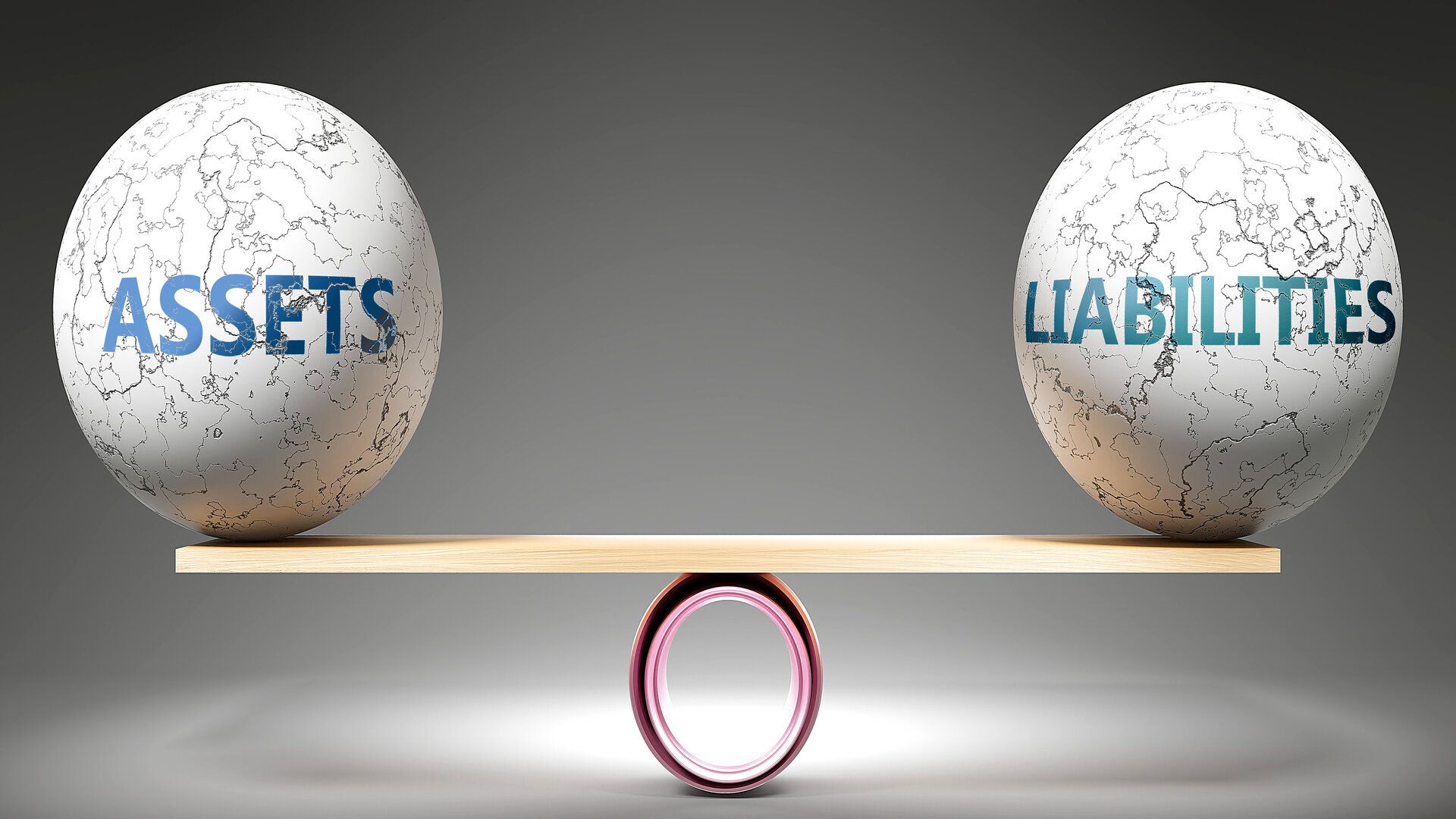
The three components of a balance sheet include assets, equity, and liabilities. It is an important financial statement and shows the company’s monetary situation on a particular date.
Assets are those that are owned by a company and provide future economic benefits. On the other hand, liabilities are owed by the company to other parties. In simple terms, assets put money in the organization’s pockets while liabilities take it out.
What are assets and liabilities?
The assets and liabilities are crucial for a company’s profitability and long-term stability. Efficient management of these helps businesses to sustain their operations. To ensure these are managed effectively, understanding them in detail is important.
Broadly, all receivables are considered as assets while all payables are classified under liabilities. Let us understand this further.
What are Assets?
Assets are resources that generate revenue and receivables. Additionally, they may assist in cost reductions, generate higher cash flows, and increase profitability.
Assets convert raw materials into finished goods and can also be converted to cash or cash equivalents. Additionally, assets have an economic value, which makes it easy to sell or exchange them.
Types of assets
Assets can be classified based on their convertibility, physical existence, and purpose. Below are the different types of assets:
Current or short-term assets
These are liquid and easily convertible to cash or equivalent resources generally within one year. Some examples include short-term deposits, stock market securities, and cash equivalents.
Fixed or long-term assets
Such assets are also known as hard assets and cannot be easily converted to cash or its equivalents. These include plant and machinery, land and building, and equipment.
Tangible and intangible assets
Assets that have a physical existence are known as tangible assets, which include inventory, market securities, land and building, office supplies, and much more.
On the other hand, assets without a physical existence like patents, trademarks, intellectual properties, and copyrights are known are intangible assets.
Operating and non-operating assets
Operating assets like plant and machinery, inventory, and cash are used for revenue generation and daily operations.
In comparison, assets like vacant land, fixed deposits, and short-term investments are not used for daily operations but can help generate revenues are known as non-operating assets.
What are Liabilities?
Liabilities for a company are classified into two categories, which include internal and external. Based on their functionality, liabilities can be classified as below:
Current liabilities
These liabilities are of shorter duration and are often repayable within a year. Some current liabilities are creditors, outstanding bills, and bank overdrafts.
Non-current liabilities
These are also known as long-term liabilities and comprise financial obligations that are beyond one year.
Generally, such liabilities are beneficial for expansion purposes or fixed asset purchases. A few non-current liabilities include bonds, long-term debts, and debentures.
Contingent liabilities
Such obligations may or may not occur for the companies during their regular course of operations. Some contingent liabilities include a claim against product warranty, loan guarantees, and potential lawsuits.
Organizations report these liabilities as a footnote along with an estimated cost in their balance sheets.
Accounting equation for assets and liabilities
The accounting equation states that the total assets for any company are equal to the sum of the total liabilities and shareholders’ equity. The formula for this equation is
Total assets = Total liabilities + Shareholders’ equity
This equation represents how the three components of a company’s balance sheet are associated with each other.
Assets are the valuable resources available with the company while the liabilities are its obligations. The liabilities and shareholders’ equity represent the financing of the organization’s assets.
If the assets are primarily financed by debt, it is seen as liabilities while if these are funded via equity share issuance, it is reflected in the shareholders’ equity.
Assets include liquid assets while liabilities are obligations owed by the company to ensure its smooth operations. Shareholders’ equity is the amount the company will be left with if all the assets are liquidated and all liabilities are paid off.
Retained earnings are a component of the shareholders’ equity and are the profits that are unpaid to the company’s shareholders and retained for future use.
Some examples of assets and liabilities are plant and machinery, inventory, debtors, investments (assets) and term loans, creditors, and unpaid expenses (liabilities). The equation is beneficial in assessing if the business transactions are accurately reflected in the company’s books of accounts.
This equation is important because it reflects the relationship between assets, equity, and liabilities, which are the components of a balance sheet.
Assuming everything else to be equal, a company's equity increases when the assets increase and vice versa. On the other hand, an increase in liabilities reduces the equity while repaying the debt obligations results in the rise of equity.
Difference between assets and liabilities
In accounting, assets are owned by the companies and liabilities are payable. The below table explains the difference between assets and liabilities:
|
Assets |
Liabilities |
|
Provide economic benefits to the companies |
Represent the companies’ obligations |
|
Help businesses in manufacturing goods or provide services in the present and the future |
Can either be money owed or undelivered services |
|
Add value to the company and increase its equity |
Decrease the company’s value and equity |
Relation between assets and liabilities
Both these components are important for the sustainability and profitability of businesses and need to be managed efficiently. However, to accomplish this objective, companies need to understand the relationship between these.
Liabilities and assets need to be in the right proportions to maintain business profitability. Companies should have adequate assets to ensure they are able to repay their debts.
Moreover, if the liabilities exceed the assets, the company may be unable to meet its obligations and get into financial difficulties.
The two aspects also help determine the liquidity ratio of a company. This directly impacts an organization’s efficiency in converting assets to cash and its equivalent.
The following ratios can help in determining a company’s capability to repay its debt obligations.
Current ratio
This is calculated by dividing the total current assets by the total current liabilities. A higher ratio indicates that the company is profitable and can meet its obligations, signifying greater liquidity.
Acid-test ratio
It is used to determine a company’s capability to repay short-term liabilities using quick assets (cash or accounts receivable).
The formula is Acid-test ratio = (Current assets – inventories)/Current liabilities
Cash ratio
This ratio calculates a company’s ability to repay short-term liabilities using cash and cash equivalents and the formula is
Cash ratio = (Cash and cash equivalents)/Current liabilities
Debt ratio
Debt ratio represents the amount of debt that is used to fund the company’s assets and its formula is Debt ratio = Total assets/Total liabilities
Owner’s equity
Assets and liabilities help calculate the value of the owner's equity or existing capital. Owner's equity is calculated as Total assets – Total liabilities
Therefore, it can be concluded that these two components of the balance sheet are important to determine a company’s liquidity situation, profitability, and debt repayment capability.
Investors are advised to check the list of assets and liabilities held by companies while making financial decisions.
What is liquidity?
Assets are generally classified based on their liquidity, which means how quickly they can be converted to cash. The most liquid asset on the balance sheet is cash since it can be immediately used to meet any financial obligation.
On the other hand, selling an illiquid asset like a factory premise is a long and cumbersome process.
Current assets are the most liquid ones; they can be converted to cash in less than one year and generate income for the business.
Illiquid assets are owned by the business but not used in daily operations or revenue generation. These are also not held for converting to cash or its equivalent. Often, illiquid assets need huge cash outlays and have a longer life.
In this article
 Back to all resources
Back to all resources







